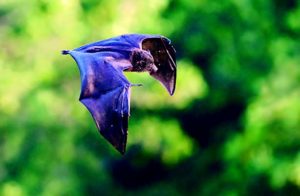In the early 90s, scientists began using bat detectors that recorded the Christmas Island pipistrelle’s supersonic calls. Over successive years, they reported a 33 per cent decline in the bat’s activity that continued to a critical level by 2009.
The reason why the Christmas Island pipistrelle’s population took a sudden nosedive is still not clear – it could have been down to pesticides or attacks from an invasive species, such as the yellow crazy ant. It was the first Australian mammal to go extinct in 60 years.

Last seen…
Date: 26 August 2009
Location: Western Christmas Island
By January 2009, at least 80 per cent of the Christmas Island pipistrelle’s population had disappeared and they were now isolated to just a single, small colony on the west side of the island. Surveys showed that the species would be extinct before the year was out, unless the Australian government intervened with suitable funding.
But despite a meeting with the environment minister where the Australian Mammal Society emphasised the urgency of the situation, the cogs of bureaucracy were too slow to turn. By late August that year, just a single, plaintive echolocation was recorded above the canopy of a known roosting site, and it has been silent ever since that night.
















1 thought on “”
How sad, this is another species our children will only see in pictorials.